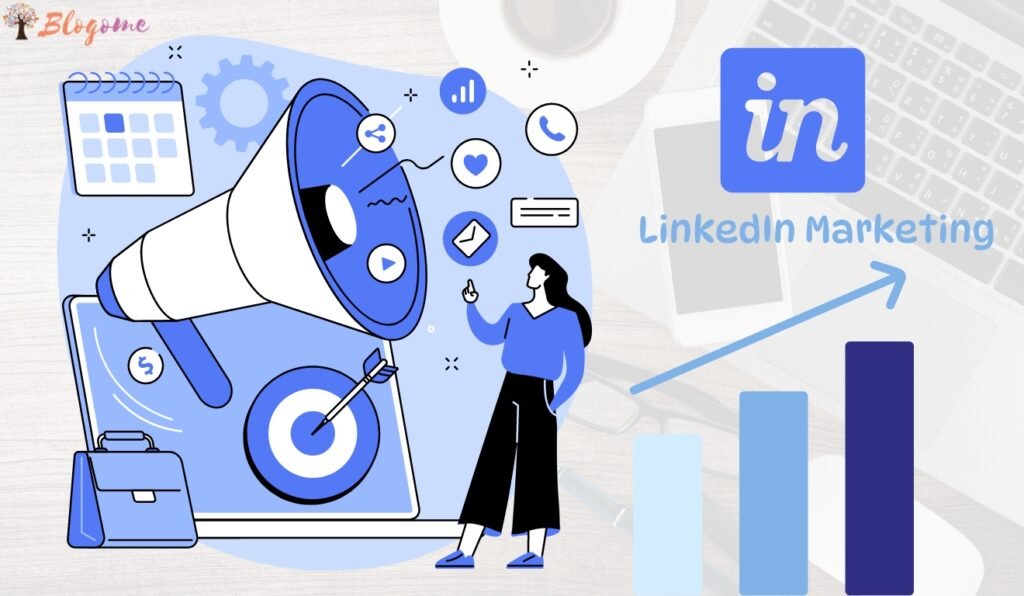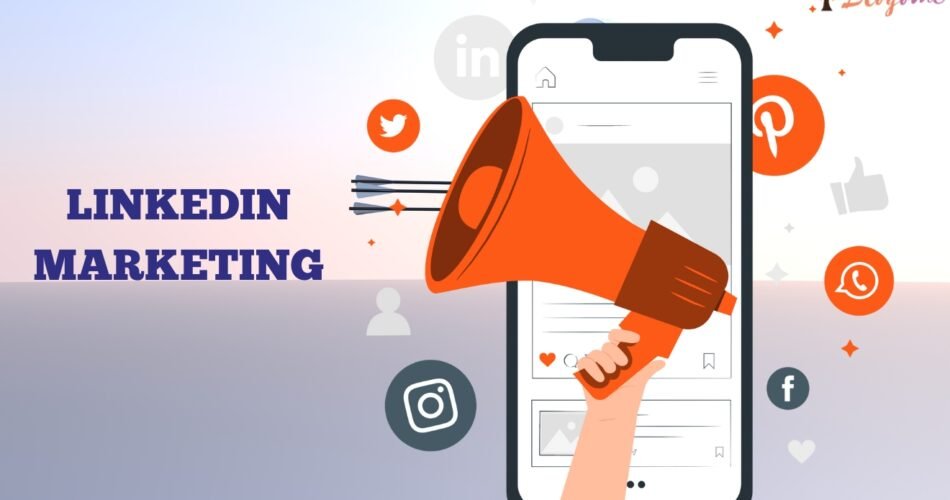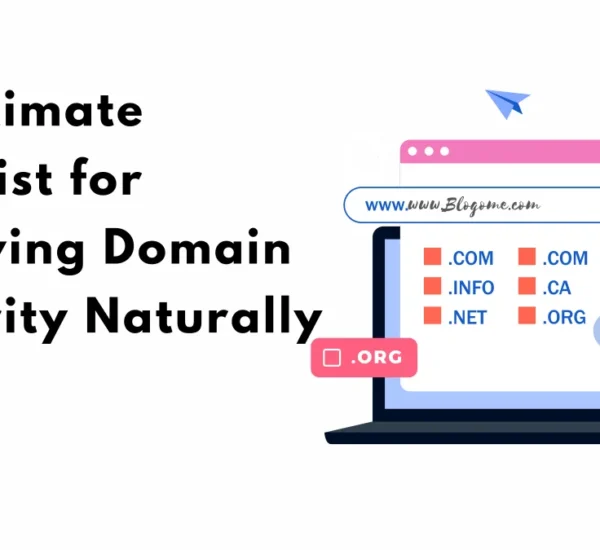Introduction
LinkedIn isn’t just a platform for job seekers or professionals to share their CVs anymore. It has evolved into a vital tool for marketers looking to broaden their reach and strengthen their brand. (In this article we will learn about LinkedIn Mastery Power Strategies for Marketing Success.) Picture LinkedIn as a bustling business networking event that you can participate in from the comfort of your office—endless opportunities to connect with like-minded professionals and grow your business.
LinkedIn Mastery Power Strategies for Marketing Success Context Menue
Overview of LinkedIn’s Importance in Marketing
LinkedIn has undergone significant transformations since its inception, increasingly focusing on facilitating professional networking and business growth. Today, it is a critical platform for digital marketing and business interactions.
Purpose of the Article
This article aims to dig deep into how you can harness the full potential of LinkedIn for marketing, from polishing your profile to advanced marketing strategies.
Developing a Robust LinkedIn Profile
A striking LinkedIn profile is your first step towards marketing success on the platform. Here’s how to make sure yours stands out.
Essentials of a Professional Profile
The cornerstone of your LinkedIn presence is a professional profile that encapsulates your capabilities and experience.
Importance of a high-quality profile picture
Your profile picture is your first impression—make sure it’s a good one! A professional headshot where you are clearly visible will make the best impression.
Tips for crafting a compelling headline and summary
Your headline should not just state your job role but also hint at your value proposition. The summary is your chance to tell your story, not just list your skills.
Importance of detailed experience and education sections
Detailing your previous roles and educational qualifications adds credibility and substance to your profile, showcasing your professional journey effectively.
Enhancing Visibility Through Skills and Endorsements
Add relevant skills to your profile and actively seek advertisements from peers to boost credibility.
How to list skills relevant to your market
Focus on skills that are highly relevant to your industry and role to attract the right attention.
Strategies for getting endorsements
Don’t hesitate to ask colleagues and clients for endorsements. Offering to reciprocate can also encourage a generous response.
The role of recommendations
Personal recommendations are like gold on LinkedIn. They make your profile more appealing and trustworthy.

Regular Updates and Activity
Regular activity on LinkedIn increases your visibility and helps you engage with your network effectively.
Benefits of posting regularly
Regular posts keep your network engaged and your profile active, signaling that you are an active participant in your industry.
Types of content that drive engagement
Share articles, thoughts on industry trends, and insightful posts. Visual content like infographics or short videos can also boost engagement significantly.
How to measure the impact of your activities
Use LinkedIn’s built-in analytics tools to track who views your profile and engages with your posts, helping you tailor your activity.
Building and Nurturing Professional Connections
Expanding your LinkedIn network is crucial, but it’s important to do it thoughtfully.
Strategizing Connection Requests
Target individuals who are relevant to your industry and align with your marketing goals for better networking.
Finding and connecting with industry leaders
Engage with content posted by industry leaders and gradually build a rapport before sending a connection request.
Best practices for sending personalized connection requests
Always personalize your connection requests with a note on why you want to connect, avoiding generic messages.
Maintaining etiquette in interactions
Always maintain a professional tone and respect the other person’s time and boundaries in your interactions.
Engagement Techniques to Grow Your Network
Being proactive in groups and events can significantly enhance your LinkedIn marketing strategy.
Importance of joining relevant groups
Join groups where your target audience is active, and engage in meaningful discussions to elevate your standing in professional circles.
Participating in discussions to boost visibility
Active participation in discussions can increase your visibility and establish you as a thought leader in your industry.
Hosting and participating in LinkedIn Events
Hosting events is a powerful way to gather your network and engage with them in real-time, while participating in others’ events can increase your visibility.
Leveraging Connections for Marketing Opportunities
Use your connections to create opportunities for collaboration and mutual growth.
Creating partnerships and collaborations
Explore partnerships with other professionals that can offer mutual benefits, such as co-hosting webinars or creating joint content.
The benefits of mutual sharing of content
Sharing each other’s content can significantly increase reach and engagement, introducing your brand to new audiences.
Using direct messaging effectively without spamming
Use direct messaging to make genuine business propositions, not to spam your contacts with unsolicited ads.
Content Marketing on LinkedIn
Tailor your content strategy to engage and attract your LinkedIn audience effectively.
Developing a Content Strategy
Identify what your audience wishes to see and tailor your content accordingly without overly promoting your own business.
Identifying your audience
Understand who you’re speaking to by analyzing who interacts with your posts and profiles.
Creating a content calendar
Plan your posts and updates with a calendar to maintain a consistent presence on the platform.
Balancing promotional and valuable content
Provide value through your posts with a mixable approach, only sprinkling promotional content to avoid overwhelming your audience.
Different Types of Content for Different Goals
Choose the right format for your message to maximize impact.
Articles, posts, and videos: when to use each
Use articles for deep dives, posts for updates and shared content, and videos for high-engagement visual communications.
The power of infographics and other visual content
Visual content like infographics often gets more shares and likes, making them great tools for increasing engagement.
Incorporating external links and calls-to-action
Drive traffic to your website by incorporating external links. A clear call-to-action encourages readers to engage with the content on a deeper level.
Analytics and Adjustments
Stay on top of the performance of your LinkedIn marketing efforts and adjust strategies accordingly.
Monitoring engagement metrics
Regularly check engagement rates to understand what works and what doesn’t, allowing you to refine your approach.
Tools for tracking success on LinkedIn
Utilize tools like LinkedIn Insights to gain detailed analytics on post performance and user engagement.
Tips for tweaking strategy based on analytics
Use data-driven insights to adapt your marketing strategies, focusing more on what resonates with your audience.
Paid Marketing Solutions on LinkedIn
A quick guide on how to use LinkedIn’s paid marketing tools to enhance your reach.
Overview of LinkedIn Ad Formats
LinkedIn offers various ad formats including Sponsored Content, InMail, and Text Ads, each serving different marketing needs.
Breakdown of different ad types
- Sponsored Content: Boosts posts from your page
- InMail: Sends personalized messages directly to users
- Text Ads: Places advertisements in various locations on LinkedIn
Recommendations for specific marketing goals
Choose ad types that align with your goals, such as Text Ads for driving traffic vs. InMail for direct prospect engagement.
Setting Up and Managing LinkedIn Ad Campaigns
Smart management of ad campaigns ensures better ROI and engagement.
Understanding targeting options
LinkedIn allows you to target your ads based on many factors such as location, industry, and job title.
Budgeting and scheduling
Allocate budgets wisely and schedule ads for optimal visibility based on your audience’s active hours.
A/B testing ads for performance
Test different versions of your ads to see what works best and refine them based on results.
Tracking and Optimizing Ad Performance
Detailed monitoring and adjustments ensure your ad spend yields results.
Analyzing ad campaign results
Regular review of campaign data helps you understand the efficacy of your ads and informs necessary adjustments.
Pitfalls to avoid in LinkedIn advertising
Watch out for common mistakes like targeting too broadly or choosing the wrong ad formats for your goals.
Optimizing campaigns based on data
Refine your campaigns continually by leveraging data insights to enhance performance and ROI.
Best Practices and Common Mistakes
Key dos and don’ts to keep in mind for successful LinkedIn marketing.
Do’s and Don’ts of LinkedIn Marketing
- Do: Be consistent with your branding.
- Don’t: Ignore the analytics.
Effective follow-up strategies
Always follow up on conversations and leads generated from LinkedIn promptly and professionally.
Common pitfalls and how to avoid them
Avoid overly promotional content and inconsistent messaging, which can deter potential connections and leads.
Ethical Considerations
Ensure your LinkedIn activities uphold high professional standards.
Maintaining professionalism and integrity
Your online behavior should reflect your business ethics and professional integrity.
Privacy issues and user consent
Respect privacy and confidentiality, obtaining necessary consent before sharing information.
Keeping Up with LinkedIn’s Changing Algorithms
Stay informed about the latest changes to leverage them effectively.
Why staying updated is essential
LinkedIn’s algorithm changes can significantly affect your marketing strategy; staying informed allows you to adapt efficiently.
Resources to stay informed about LinkedIn
Follow LinkedIn’s official blog and industry experts to get updates and insights.
Conclusion
LinkedIn presents a vast array of tools and opportunities for marketers willing to invest time into mastering the platform. From crafting compelling profiles to engaging effectively with your network, every detail counts towards marketing success.
Final Thoughts on Using LinkedIn for Marketing
Leverage LinkedIn judiciously and persistently, and you can substantially expand your professional network and achieve your marketing objectives.
Frequently Asked Questions
What is the most effective type of content for LinkedIn marketing?
Visual content and well-researched articles typically perform best owing to their high engagement rates.
How often should I post on LinkedIn to maintain optimal engagement?
Aiming for 3-5 posts per week can help maintain a balance between engaging and overwhelming your audience.
Are LinkedIn Premium or Sales Navigator worth the investment for marketing?
For most marketers, LinkedIn Premium or Sales Navigator can be valuable tools, especially for those focused on B2B marketing, as they provide deeper insights and more advanced targeting options.





